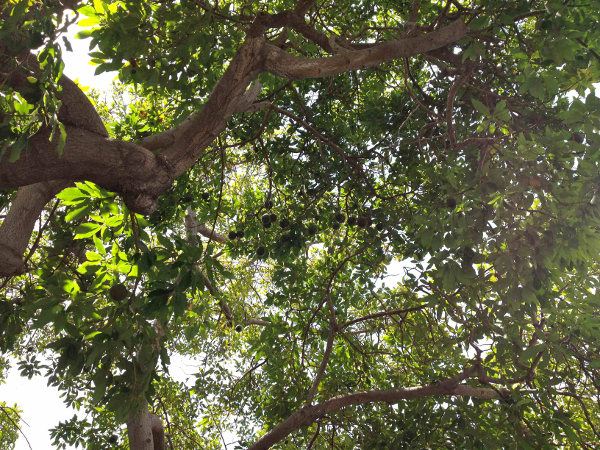Caring for your Avocado Tree Part 1: Seasonal Upkeep
 Prized for their buttery textured, highly nutritious and delicious flavored fruits, avocados trees have become a staple of the California landscape. From backyard growers to commercial farms they flourish and thrive by the thousands.
Prized for their buttery textured, highly nutritious and delicious flavored fruits, avocados trees have become a staple of the California landscape. From backyard growers to commercial farms they flourish and thrive by the thousands.
As plentiful as they are in Mid to Southern California this is not their native home and they actually prefer an even warmer climate. While this obviously doesn’t mean they are not a viable plant in the local environment, it does mean that they may require a little seasonal upkeep to remain in top health and delivering maximum beauty and production.
Flushing the Soil
California rains tend to deposit a high amount of salts in the soil. This can be detrimental to your avocado trees health and it may be necessary to practice leaching irrigation come autumn in order flush these salts out as a first step in returning your soil back to optimum health.
Leaching irrigation is slightly over watering your groves or garden area while providing sufficient drainage to carry away unwanted minerals. An unfortunate side effect of this practice is that the good nutrients can be washed away with the bad salts and it may be necessary to apply an extra cycle of fertilizer to reinvigorate the soil.
A good choice for this application would be E.B. Stone’s GreenAll Citrus & Avocado Food 14-4-8. It is completely organic and provides a quick boost to the soils nutrient content as well as slow release agents to carry your trees through the winter season’s slow growth period.
Fertilizing
As with any plant, proper nutrition is a key factor in maintaining your avocado’s health. This means providing the appropriate levels of nutrients in the proper seasons. For optimum health, soil/leaf/water tests should be run seasonally and appropriate nutrients provided. As a general rule, the healthier your soils microbes the less fertilizing your trees will require.
A yearly application of Grow More Citrus & Avocado Organic Fertilizer is an ideal way of ensuring healthy colonies of microbes in the soil. It has a special blend of ingredients designed to promote biological activity in the soil, encourage and support the growth of beneficial microbes and naturally stabilize and condition the soil.
Pruning
Light pruning that encourages an abundant growth of foliage is an important factor in receiving high yields. Avocado trees are evergreens and can be lightly pruned most any time of year. Heavy pruning though should be performed in late winter or very early spring.
Pruning avocado trees any other time of year could run the risk of placing your trees in an alternate bearing cycle. Heavy autumn pruning should especially be avoided as this can cause a frost sensitive autumnal growth flush and could lead to the loss of an entire season’s fruit.
Freeze Protection
The tropical rainforest is the natural home of the avocado tree. Though there have been many varieties, like the ‘Fuerte’ and ‘Hass’, developed over the years, it is still primarily a hot climate plant and needs to be protected from freezing.
In areas prone to heavy frosts and below freezing temperatures, care should be taken to ensure free airflow to prevent cold air pooling. If needed light pruning can be used to facilitate air flow and irrigation and wind machines can be used to assure proper ventilation for your trees.
Avocados are delicious and nutritious and, despite how it may appear they are really very forgiving plants to grow. Considering that a single California avocado tree can produce anywhere from 60 to 200 pounds of fresh fruit each year they are more than worth the little effort it takes to maintain them.
For all of your gardening and landscaping needs contact Whittier Fertilizer. Your “One Stop Landscape Supply Center”, serving nurseries, gardeners, landscapers and homeowners throughout the Southern California region.
Posted in: Gardening
Leave a Comment (0) ↓